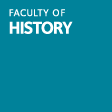In Laocoon, Lessing attempts to cast the poet as ‘elevating’ arbitrary linguistic signs to the status of the natural signs of painting. This chapter sets out to explore the seeming paradox of this position. It argues that Lessing drew upon a wide range of French and German thinkers who downplayed the arbitrariness of language while simultaneously emphasizing its natural features (among them, Rousseau’s projection of a performative ‘language of signs’ on to classical antiquity, Condillac’s ‘language of action’, and not least Diderot’s musings on what he termed ‘poetic hieroglyphs’). The essay consequently demonstrates how the Laocoon takes its inspiration from multiple sources, extending far beyond the intellectual remit of Christian Wolff and his German followers: Lessing’s call for the naturalization of arbitrary signs, and his discussion of ancient poetry in this light, can only be understood against the backdrop of a cross-European debate about linguistic signs.
https://global.oup.com/academic/product/rethinking-lessings-laocoon-9780...



